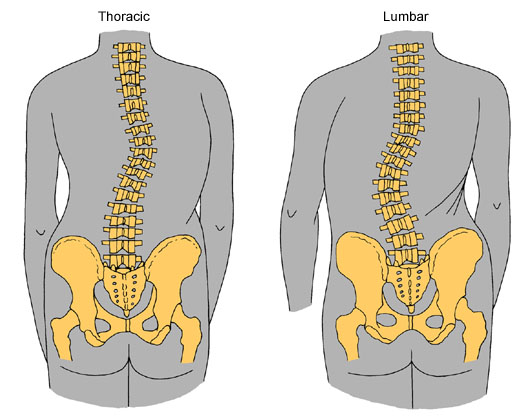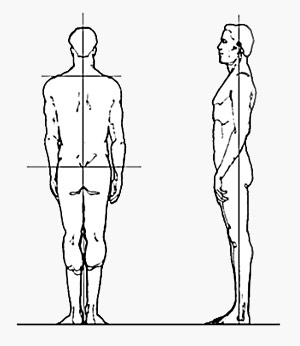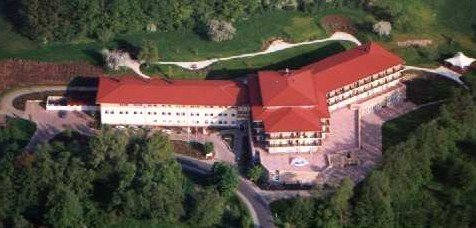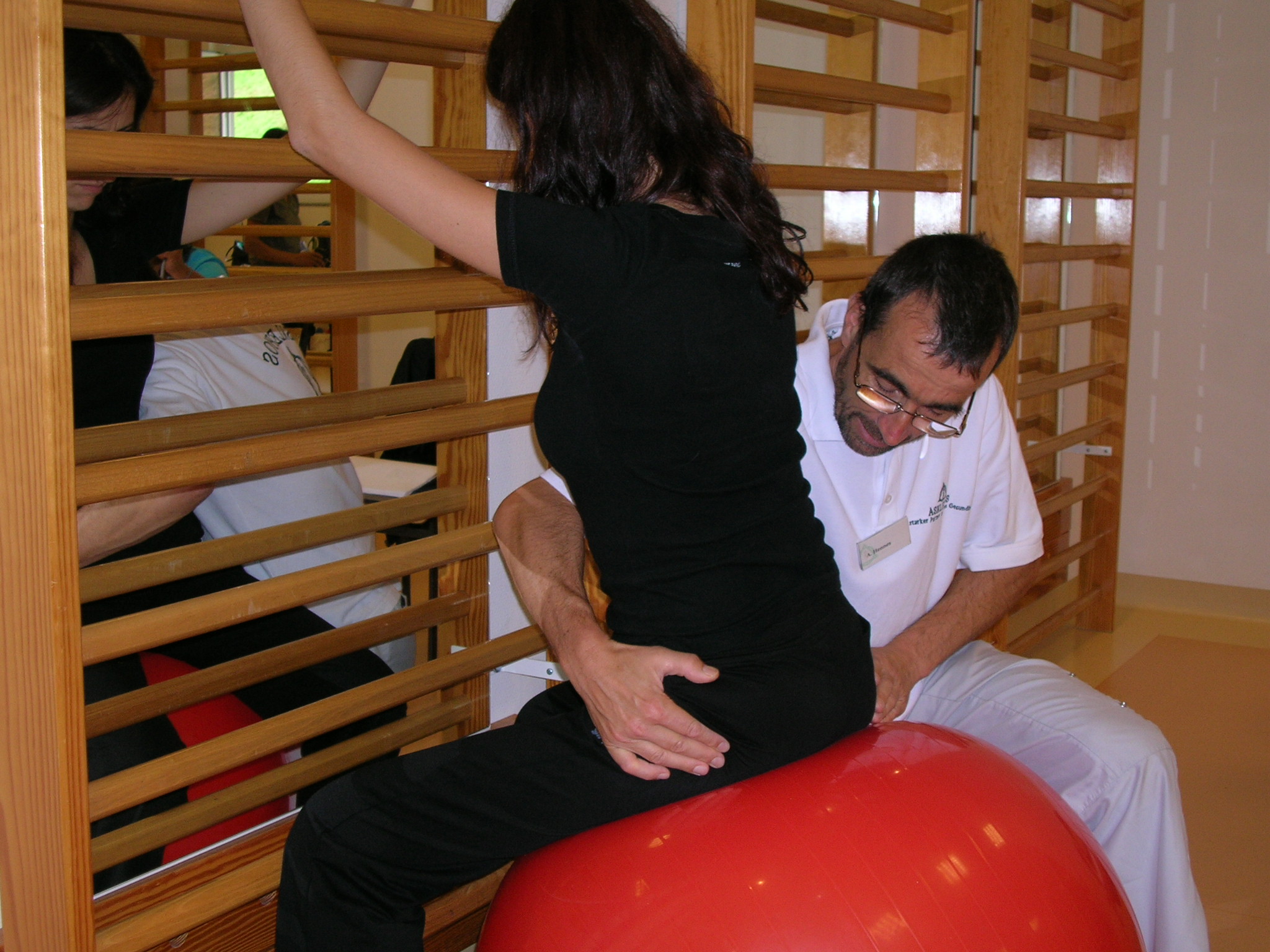English
What is Scoliosis?
The basic definition is a side to side curvature of greater than ten degrees
as measured by the Cobb angle. The Cobb angle is a lateral measurement
between the upper and lower most vertebrae of the scoliosis curve.
Idiopathic means no known cause. Idiopathic scoliosis can be broken down into age groups, based upon onset of curvature.
Infantile: Age 0-4
Juvenile: Age 4-10
Adolescent: Age 10-18
Adults: over age 18
Adolescent Idiopathic Scoliosis (AIS) is the most prevalent scoliosis, and is the
type most often treated using Schroth physical therapy. Patients with AIS can be
treated while still adolescents or as adults.
Conservative therapy for scoliosis is directed at interrupting the "vicious
cycle" that acts upon the spine. There is no exact way to predict which curve
will worsen, and which will not. Growth is the number one variable that
influences progression of curves: The more growth potential, the more curve
progression is likely. The general rule is the greater the curve and the
younger the patient at diagnosis (in age and skeletal maturity), the higher the
chances the curve will progress. Almost all infantile and juvenile
scoliosis curves will progress, and therefore require more aggressive
treatment beyond physical therapy.

Summary of Schroth Method
Therapy is based on the principle that scoliosis has a postural component that
can be improved by altering the forces that act on the spine. The belief is that
children and adults are capable of understanding their scoliosis and are willing to
become educated and play a proactive role in their own health. Curve-specific
exercises are taught using principles of physics, anatomy, physiology, and
kinesiology. Exercises are repetitively practiced in multiple positions to challenge
the body.s strengths and weakness. When practicing corrective exercises,
optimal postures, and proper mechanics, the body can adapt to a new and better
position.
Goals of Schroth Therapy
Although prevention of curve progression is the primary goal of physical therapy,
additional goals are also important to quality of life for patients with scoliosis:
improve posture and body mechanics
reduce pain (if present)
improve breathing capacity
improve strength and flexibility
optimize cosmetic appearance
prevent (or delay) surgery
enhance psychological outlook

History of Schroth Method
The Schroth method was developed in Germany during 1920.s by Katherina
Schroth. Katherina was diagnosed with scoliosis as an adolescent and was told
that she would need surgery. In order to avoid surgery, she diligently preformed
self-made exercises to counteract the affects of scoliosis on her spine. The
techniques have been perfected over decades with the help of her daughter,
Christa Lehnert-Schroth, a physical therapist, and her grandson, Dr. Hans
Rudolph Weiss, an orthopedic surgeon. The Schroth method has now been
practiced in Europe almost 90 years.
The Schroth Clinic in Bad Sobernheim, Germany, is run by Katherina. Schroth.s
grandson, Dr. Hans-Rudolph Weiss. (See www.skoliose.com) The program is
designed as a Scoliosis Inpatient Rehabilitation. program (SIR). This involves a
four- to six-week inpatient stay at the dormitory.based Schroth center. Patients
learn and practice Schroth in groups and receive related services for four to six
hours a day. Patients then follow up with one of the many Schroth therapists
located throughout Europe. Dr. Weiss is respected worldwide, and has published
many articles on the conservative management of scoliosis.


Who is a Candidate for Therapy?
In 2006, SOSORT published recommended admission criteria for rehabilitation.
SOSORT is The Society on Scoliosis Orthopedic and Rehabilitation Treatment, -
a multidisciplinary international society committed to research and practice of
non-surgical scoliosis care. (See www.SOSORT.com).
SOSORT criteria for therapy include:
Curves 20-25 degrees of Cobb angle
Girls age 12, boys age 13
Risser sign under 4
According to SOSORT, the above criteria are only guidelines, and considerations
for therapy admission should be made on individual cases. There have been
discussions suggesting earlier admission for smaller curves when there are clear
signs of structural vertebral deformity (as seen on x-ray), and when there is a
strong family history of progressive scoliosis. In these cases, it may be
appropriate to begin treatment for younger patients with curves at 10-15 degrees
in order to prevent progression.
3 Steps of Schroth Scoliosis Program
Step One: Evaluation
Prior to initiation of therapy, patients undergo a thorough evaluation consisting of:
orthopedic examination
posture exam with digital photos
breathing assessment
x-ray review
curve classification
discussion of individual findings
The purpose of the evaluation is to gain the clinical information necessary for the
patient, family and therapist to jointly determine the patient appropriateness for
physical therapy, and to set individual therapy plans and goals. Patients and
families will have time to ask questions specific to their individual cases.
Step Two: Treatment and Exercise Instruction
Following evaluation and orientation, each patient is scheduled based upon his
or her individual treatment plan. Plans will range in content and progression
according to individual findings. Some patients may require more hands-on
therapy treatment as an adjunct to exercise, while others will be ready to begin
exercise immediately. We tailor programs to meet individual needs to foster the
most successful overall therapy experience.
Step Three: Follow-Up
Once trained in Schroth, patients continue exercises at home for 20 to 30
minutes per day, five days per week. The critical period for exercise consistency
is through the growing years, but the exercises are designed for life-long use in
order to maintain curve stability well into adulthood. Follow up therapy
appointments will vary by individual patients.
For more information about Schroth Scoliosis Program, please contact us at 852-3694-0686, or e-mail: nng@scoliosishk.com
Links
The Website about Schroth Method from Germany
www.schroth-skoliosebehandlung.de
The Katharina Schroth Spinal Deformities Rehabilitation Center
www.skoliose.com
National Scoliosis Foundation
www.scoliosis.org
Scoliosis: An online journal published by BioMed Central
www.scoliosisjournal.com
Society on Scoliosis Orthopedic and Rehabilitation Treatment (SOSORT)
www.sosort.com
|